|
Summer Solstice 20th June- 31st July 2020
On the evening of 20th June 2020 the Sun will have reached its peak which marks a key threshold in the seasons of our life, it is the time when the great Oak of the Dagdha gives way to the tenacious strength of the Holly which takes us through to the waning year. This year it coincides with a New Moon and the annular solar eclipse making it the perfect time to re-emerge after a lock down! At this time of year I am normally extremely active running outdoor courses but this year I have had an equally special time celebrating with the Strange times story telling group telling the tales of Fionn McCuaill who matured into a wise leader and poet finding that connection with all of nature where he is free from the burdens of life, a place which has been very much needed this year : No pain here, no dull empty hours, no fear of the past, no fear of the future. So compactly filled with God’s beauty, no petty personal hope or experience has room to be. Drinking this champagne water is pure pleasure, so is breathing the living air, and every movement of the limbs is pleasure, while the whole body seems to feel beauty when exposed to it, entering not by eyes alone but equally through all one’s flesh like radiant heat, making a passionate ecstatic pleasure glow not explainable. John Muir Re-emergence Morning Meditation You may wish to connect with this time of year when Nature is overflowing with the joyous abundance and vibrancy of the young adult prepared to now step into the responsibilities that life has offered to them. This meditation can be done not just this weekend but every morning throughout the Summer Season. Light a candle and recite this traditional Irish prayer to arise with the power of the elements: I arise today through the strength of heaven: Light of sun, Radiance of moon, Splendour of fire, Speed of lighting, Swiftness of wind, Depth of sea, Stability of earth, Firmness of rock. Once you have recited this then offer a prayer to the Dagdha the embodiment of the spirit of the Green wood who represents the zenith of the mature Oak tree that will shelter you in times of need: Good God Dagdha, Father of Many, Parentage of the Sidhe, All-knowing Noble, Spirit of the Green Wood shelter us; Power of the soft brown earth comfort us. May the strength rising from the roots of the trees transport us to the bright realms acting as pillars of hope. May the roots of trees ground us in one reality, taking us into the depths of our being, the womb of the earth. Inspiring us to be caretakers of all Nature. Good God Daghdha, May we be as steady as a tree, serving all beings and taken only that which we need to sustain our lives. Good God Daghdha, Envelop us in the knowledge of the Green Wood. Teach us to have a compassionate heart and truly love all souls equally as one. Great God Daghdha teach us to be light of spirit, tender of heart, steadfast in being. May the wild wood of all souls continue to blossom for all eternity. Sit in an upright comfortable posture or lay down and cover yourself in blankets. Visualise a giant oak tree or just feel it is there and sense the protection of the Dagdha. When you are ready visualise yourself moving from the protection of the giant Oak into a Birch Grove, the tree of new beginnings which represents the gentle strength required to re-emerge. The light airy birch grove is teeming with melodious birds, a myriad of fungi and the sounds of wild animals stalking prey or making shelter. Make it as real as possible, try to touch the barks, smell the scents and hear the sounds. Go deep into the feeling of being immersed in nature, remembering it is the feeling rather than the visions that is most important. Feel the support of the woodland floor and imagine bright light coming up into you from its depths filling your being with peace, love, gratitude and acceptance. Stay here for as long as you need or are able to allowing the light to fill you with increased courage and energy at this vibrant time. Only when you are ready come out of meditation and recite the words: Light of a New Day awaken in my heart, May I greet each day with new eyes, ears and speech Knowing a new adventure has began. May I feel a passion for each day as if it is the only day I have to live my life A day filled with excitement, expectation and exaltation as the sun rises and I greet a New Day. J.Huet Thank the elements and all of nature for its support, know there is a place within you where there is no pain and fear and begin an exciting new chapter in your life. When you feel ready and strong you can take that joy and support with you out into the world, contemplating or reciting these words: Untouched, unshaken in a constant state of love. A state of peace connected to an ever-evolving heart that reaches out to every soul on the planet. To see only beauty, to allow every person to shine with the radiance of their own inner true selves. To go beyond judgement and fear and connect with every being in their innermost heart. To be patient, tolerant and unyielding in a state only you can know. To meet everyone in the bliss of conscious acknowledgement and to know every fault perceived is a reflection of the state of your own inner heart. Reach out to the goodness in the heart of every person you meet and watch them shine into conscious awareness knowing they are loved. Be kind to everyone you meet. ©Original writings created by and for the use of Jonathon Huet 2020. Continue to connect with the Celtic traditions of the Land and receive our free newsletter packed with articles on trees, plants and Nature Connection
6 Comments
kidney vetch- milkwort- birds foot trefoil. Flowers of the downsI'm just in love with all these three, The Weald and the Marsh and the Down country. Nor I don't know which I love the most, The Weald or the Marsh or the white Chalk coast! I I've buried my heart in a ferny hill, Twix' a liddle low shaw an' a great high gill. Oh hop-bine yaller an' wood-smoke blue, I reckon you'll keep her middling true! I've loosed my mind for to out and run On a Marsh that was old when Kings begun. Oh Romney Level and Brenzett reeds, I reckon you know what my mind needs! I've given my soul to the Southdown grass, And sheep-bells tinkled where you pass. Oh Firle an' Ditchling an' sails at sea, I reckon you keep my soul for me! Rudyard Kipling Ah, how I missed the Downs during lockdown and although it has been a worthwhile pursuit noting the flowers of the Cityscape I missed the Downs where I work. Old Winchester Hill is about two miles from the Sustainability Centre where I teach outdoor education. The site is a 66.2 biological Site of Special Scientific Interest as well as a Nature Conservation Review site and a National Nature Reserve. As you arrive and join the pathway you are greeted by long grass with the common sights of burdock, hogweed and willowherbs with a splash of yellow toadflax and the taller mignonette. The distinctive Jack go to bed by noon spreads its petals ready to close them at midday.The trefoils creep through the undergrowth and the yellow vetchling and the greater birds foot trefoil compete with the invasive species which indicate there is more here than the average grass sward. Left to Right- Jack go to bed by noon- Fragrant orchid - Yellow vetchling Then the magic happens, the more natural habitat of the unimproved grasslands of the Downs erupts before you with breathtaking beauty. The low clipped grass reveals a mosaic of hawkweeds, hawkbits, orchids and yellow rattles. Red kites soar above you seemly replacing the buzzards of the lower areas, skylarks rise in song as if they were presenting the climax of an aria in a famous opera and pipits dart around as if they are propelled by joy, the pulsing heartbeat of Nature seems to call out to the exploring naturalist. These Downs depend on the traditional hill-farming of England and although this area is a National Park much of the countryside is in a man-made state due to early clearances of woodlands. Ironically this biodiverse site shows human-habitation and therefore land clearance from at least the Iron age and maybe earlier as Bronze Age barrows are present within the remains of an Iron age Fort. Beatrix Potter most known for her illustrations was an avid conservationist and keen farmer demonstrating that farming and conservation can go hand in hand. Thanks to her much land has been preserved in the Lake district as she worked diligently with the National Trust which depends on pastoral farming for the survival of thousands of plant species, which in turn preserves insects, birds and mammals. Left to Right- Characteristic hangar woods- Ancient Yews- Rare Juniper trees As you approach the remains of an Iron-age Fort you receive glimpses of the original natural landscape literally clinging to the steep slopes creating hangar woodland that is so prevalent in the undulating hill landscape of this area. The trees are exquisite ancient living monuments of extreme importance consisting of the native rare junipers and yews which are thousands of years old! I shall take these visions and memories home and just like Beatrix Potter :- 'Thank God I have the seeing eye, that is to say, as I lie in bed I can walk step by step on the fells and rough land seeing every stone and flower and patch of bog and cotton pass where my old legs will never take me again.' Beatrix Potter If you have enjoyed this article and wish to receive our free newsletter packed with information on trees, plants and nature connection please subscribe below. May Nature continue to inspire you. Left to right- Dove's foot cranesbill, ivy-leaved toadflax- catsear Exploring the Cityscape'Always fond of flowers, attracted by their external beauty and purity. Now my eyes were opened to their inner beauty, all alike revealing glorious traces of the thoughts of God, and leading on and on into the infinite cosmos.... my eyes never closed on the plant glory I had seen.' John Muir This time has been great for me to connect with my home city of Brighton for usually I am working out on the Downs or in the woods away from home. Although I have been an avid botanist for over 30 years this has created a rare time for me to really observe closely what's on my doorstep and marvel even more deliberately on the common plant that grows through the cracks in the pavement. Isn't nature a marvel, here is a poem I wrote to acknowledge her tenacity and unaltered beauty: 'Delicate blooms of tenacious power, soft lush growth produced wherever it can flower. Over rubble and concrete, plastic and glass, nature regenerates, cares not if you've asked. Green fresh growth encapsulates beauty, every tiny flower tells a story. Showing no fear it grows where it can, covering up the waste produced by man. ' J.Huet 2017 I wish to emphasise most stringently that walking around Brighton from pavement to park, from shore to scrub and from busy coast to the start of the countryside has not felt a second-rate experience compared to the wilderness but an exciting pursuit to quote once more from John Muir : 'Everywhere and always we are in God's eternal beauty and love. So universally true is this, the spot where we chance to be always seems the best. ' I started my life living in centre of the City of Portsmouth in high rise flats and busy streets which meant the verges and parks were my way into nature. I always carried my note book and a pair of old heavy binoculars which I did hide most of the time because I felt I looked a little out of place. However I still remember that rush of excitement at discovering new plant and bird friends. Being a naturalist for me is finding the joy in the common place, the common wildlife and it seems I am not the only one as Patrick Kavanagh states about the plant below: 'O the prickly sow thistle that grew in the hollow of the near field I used it as a high jump coming home in the evenings. A hurdle race over the puce blossoms of the sow thistle.' One of our most common plants also pictured below is the daisy which John Muir describes thus: 'Daisies confiding wild children of light, too small to fear. To these one's heart goes home, and the voices of the storm become gentle.' Left to Right- Sow thistle - Daisy I now find myself acquainted more intimately with over 100 wild plant friends within an hour walk of the city where I live, which doesn’t include shrubs, trees or planted species.The plants vary from pavement rockets and mustards offering a ray of yellow petalled sunshine to clambering ivy- leaved toadflax and the dull pellitory of the wall in contrast to the bright red valerian growing through walls and crevices. Minute corn salad and swine cress flowers just a millimetre across, and larger but still small purple flowers of Crane and Storks bills so named from their beak-like seed pods. I still, after thirty years exclaim at the common sights of golden buttercups and dandelion and the deep purples and blues of ground ivy and speedwells sprawling or appearing to hover in the grass. I sit for a moment on a concrete slab and squinancy wort and mouse ear look out from crevices. My excitement when I see long horned poppies and bucks horn plantain growing on pebble and rubble. And then quite unannounced an area of unimproved grass boasting purple wild thyme, bright yellow catsear, autumn hawkbit (with its striking red streaks beneath its petals), and a mat of silvery fur produced by mouse ear hawkweed. The larger knapweeds, hawksbeards and ox tongue begin to flower and the promises of rest harrow and native peas. Left to right knapweed- yellow horned poppy- mouse-ear As I walk to the local shop I stop to admire the beauty of a dandelion peeping out from the pavement. The ray florets spreading out around a golden centre capturing the sun and inviting winged delights to pollinate them. Other native asters (members of the daisy family Asteraceae the largest plant family in the UK) also peeping out of cracks in the pavement include the common sow-thistle and the daisy already mentioned above whilst groundsels droop under the weight of yellow buds and little white stars shine up from the green foliage of chickweed.
Bittercresses and shepherds purse grow through the tinniest of spaces with hedge mustard and eastern rocket beside them. Germander speedwell finishes the pavement design with sky blue flowers on small patches of soil exposed to plant street trees. Luscious abundant foliage of the green alkanet, red valerian and jack by the hedge paint the pavement green and in the grass verges clovers, yarrows, nettle, and dock create a green oasis under blossoming cherries and plums. On the way back a single yellow flower of wood sorrel delighted my keen eye, common mouse ear stood proud and the red dead nettle lifted my spirits. I marvelled at so many common species decorating my urban neighbourhood from dainty and spiky to upright and sprawling to tiny and majestic to dull and shiny. As already quoted above: 'my eyes never closed on the plant glory I had seen.' John Muir If you have enjoyed this article you may wish to sign up for our free newsletter which is packed with information on trees, plants and connecting with nature. From left to right- red campion, white campion and bladder campion. The Campions 'Come to the woods, for here is rest. There is no repose like that of the green deep woods.'
John Muir Common Name: Red Campion Latin : Silene diocia Family: Caryophllaceae History and/or use: A soap can be made from the roots. Wildlife Value: Nectar plant for bees, buterflies and hoverflies. A walk in the green woods in June reveals Silenus who is the Greek intoxicated God of woodlands that gives a home to the plant sucking nymph known as froghopper who encases herself in a protective foam. All of this of course is true for the sight I speak of is the gentle plant known as Silene (campion) the name of which is derived from Silenus the Greek God of the woods. The campions I write of have red and white flowers and also share the folk name of cuckoo flower with the plant called lady's smock ( Cardamine pratensis) which also houses the froghopper nymph, a common spring site on our British flora. Further folk names of the campion such as Robin Hood and adder's flower point to a plant which once was noticed and celebrated at a time when nature is brimming with the 'silent uprush of sap' to paraphrase the inspiring John Muir who continues to state that the sap rising and the storms of every sort 'are the orderly beauty-making love- beats of Nature's heart.' Campions can vary in colour from red to pink and white and once were used for snake venom as the above folk name indicates, their roots make soap and the juice of the plant was said to remove warts and corns. Please do not use this plant as used incorrectly it is incredibly toxic! The red campion is closely related to the white campion (S.latifolia) and when they grow together they readily hybridise unusually compared to other plant species, still remaining fertile thus disguising the original parents creating various shades of red, pink and white flowers. The other common species of campion is known as the bladder campion as it has an inflated calyx that resembles the bladder, its closest relative is the sea campion ( S.vulgaris) which also has the same distinctive calyx. You will find this species growing on cliffs and shingle distinguished by having larger scales on its petals than the bladder campion. The bladder campion exudes an evening scent but even for long-tongued invertebrates its nectar is hard to obtain which has led bumble bees to bite through the base of the flower to obtain the nectar. If you have enjoyed this article you may wish to sign up for our free newsletter which is packed with information on trees, plants and connecting with nature. |
Details
Poetry of flowersJoin me to explore the flora of the British Isles on this blog. My intention is to attempt to capture the unique quality and beauty of each species of flower, tree or shrub. For every species featured I will be growing many more wildflowers to celebrate the joy of their existence, their intrinsic conservation value and bewildering array of uses. For nearly 30 years I have noted, studied and explored wildflowers in the field much to the patience of the walker beside me. To share this passion is a heartfelt plea to respect, preserve and care for all British Wildflowers no matter how common they seem. Archives
February 2024
Categories |

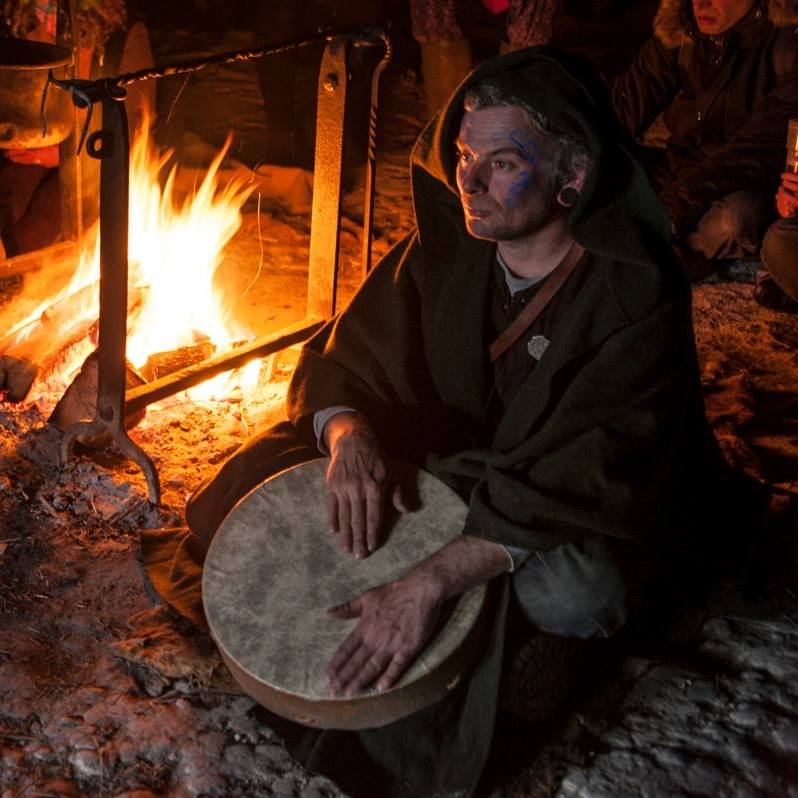

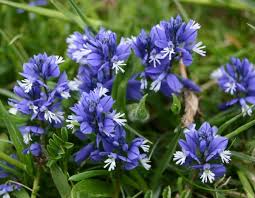

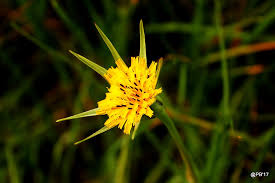




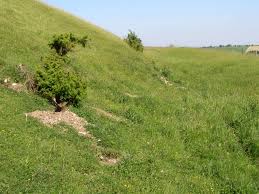






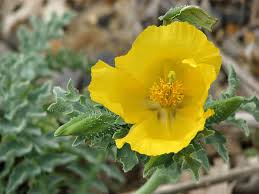
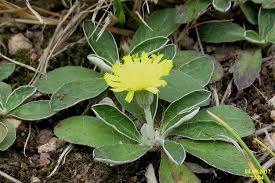
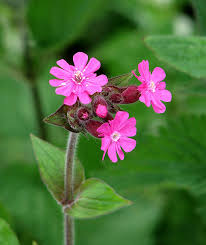
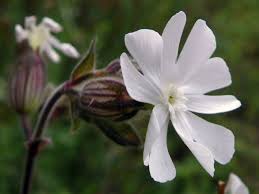

 RSS Feed
RSS Feed
